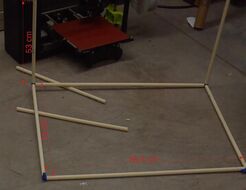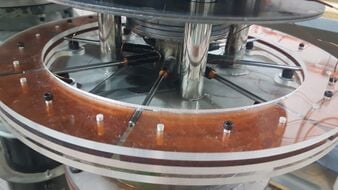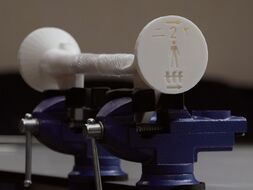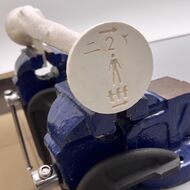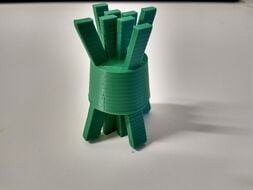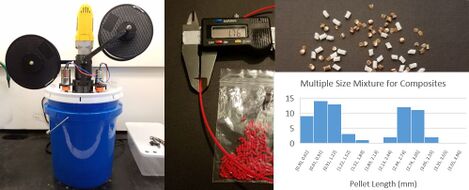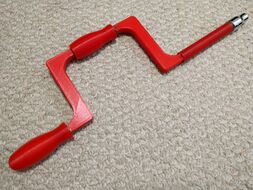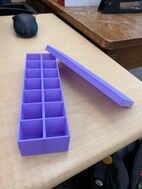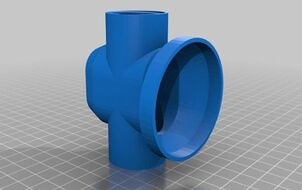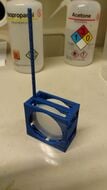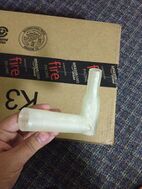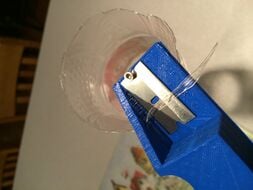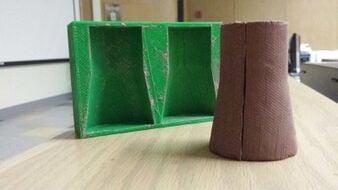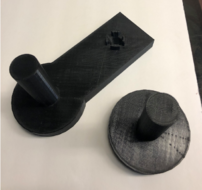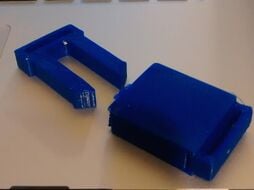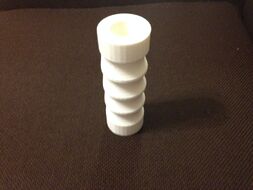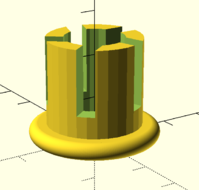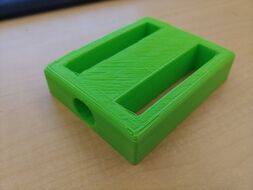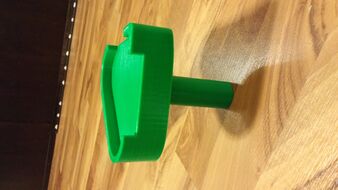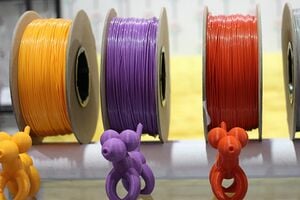
3D printing is type of additive manufacturing. The technology allows artists to print out 3D models of their designs using a computer. It does this by taking a 3D computer-generated image and manufacturing it into a physical figurine.
"It is, bar none, the 'hottest' technology for modern and future manufacturing in the world."
Due to falling prices, it is now becoming available for everyday artists and 3D designers. Technology gives artists much freedom when designing 3D art. They have the power to create virtually any shape out of nearly any material. This manufacturing method is also much more dynamic than other methods like traditional molding or CNC cutting. When artists print 3D models, they don't have to worry about certain aspects, for example: through 3D printing, artists can print 3D models that are similar to rubrics cubes, certain puzzles like products, mechanical functioning products, and other significant products such as a ball within a ball. These kinds of products are difficult or impossible in traditional mold manufacturing, as well as CNC cutting.
Here at Appropedia we are primarily focused on printing open source appropriate technology.
How to use a 3D printer[edit | edit source]
First, you need to have a 3D model of whatever object you want to print. You can make this model yourself, preferably using Google SketchUp (as this program is most suited for making models for 3D printing[1]). However, you can also use another program like Blender3D, Sculptris, 2Brush, 123DSculpt, or a 3D modeling program specifically made for 3D printing -such as 123DStudio TinkerCAD, 3DTin). which you can attain from a website like convert your 3D file (ie sketchup, collada,) to an .stl or .obj file.
Once this is done, the computer can send CG images to a 3D printer using this STL file. The printer will then create the image layer by layer out of various materials. For example, the printer might create an ABS plastic model by producing layers and fusing the layers. Thus, through 3D printers, artists can print 3D models of their creations.
Before going further, you may enhance your knowledge about What To Do With A 3D Printer.
Materials[edit | edit source]
There are quite a few materials out there that can be used when trying to print 3D models. There are companies out there offering a wide variety to choose from. Some places provide 5-10 materials. Some offer over 50! These materials could be:
- Ceramics
- Plastics
- Liquid resin
- Rubber-like materials
- Metals,[2]
- Materials with mechanical properties
- Precious metals; artists can print 3D models out of gold, silver, and platinum (though obviously at a high cost).
List of suppliers[edit | edit source]
A 3D printing service is the service of printing a 3D model. When the model is printed in a foreign country, the model is also shipped to your doorstep. Printing in local branches/offices and picking them up yourself is another possibility. Here is a list of suppliers:
- i.materialise: print and send yourself manufactured items from an .skp or .STL file
- Ponoko: make and sell manufactured products (sending them worldwide) based on an .STL or VRML97 file
- Shapeways: print and send yourself manufactured items from an .skp or .STL file
- Sculpteo: print and send yourself manufactured items from an .skp or .STL file
- PGBS: send your sketch or image or 3D model to get flawless print ready STL file
- Inition: print and send yourself manufactured items from an .skp or .STL file
- Print to 3D: print and send yourself manufactured items from an .skp or .STL file
Related projects[edit | edit source]
See also[edit | edit source]
- Open source 3-D printers
- Open source 3-D printing of OSAT
- Open source sustainability 3-D printing design competition
- 3D printable science equipment
References[edit | edit source]
- ↑ Most suited since flaws can be created when converting the driven 3D model to an .stl file with programs like Blender3D, ...
- ↑ Molten metal 3D printers from EOS GMBH and Arcam AB
External links[edit | edit source]
- Thingiverse: site allowing the sharing of free 3D models (under several licenses). For printing purposes, STLs usually are needed, but they can house any 3D format like .skp.
- OpenSCAD; a 3D modeling program that can output the 3D model directly in.STL. It is easy to work with using Thingiverse because it allows easy manipulation of parametric designs by non-experts and is entirely open-source.
- Plug-in for Google SketchUp to export in.STL
- FastSpring, Turbosquid, and Falling Pixel are other sites where regular 3D models (.skp) are often sold
- Ponoko: make and sell manufactured products (sending them worldwide) based on a . STL or VRML97 file
- Shapeways: print and send yourself manufactured items from a .skp or.STL file
- Proglobalbusinesssolutions: list of top 57 websites offering free 3D print models
